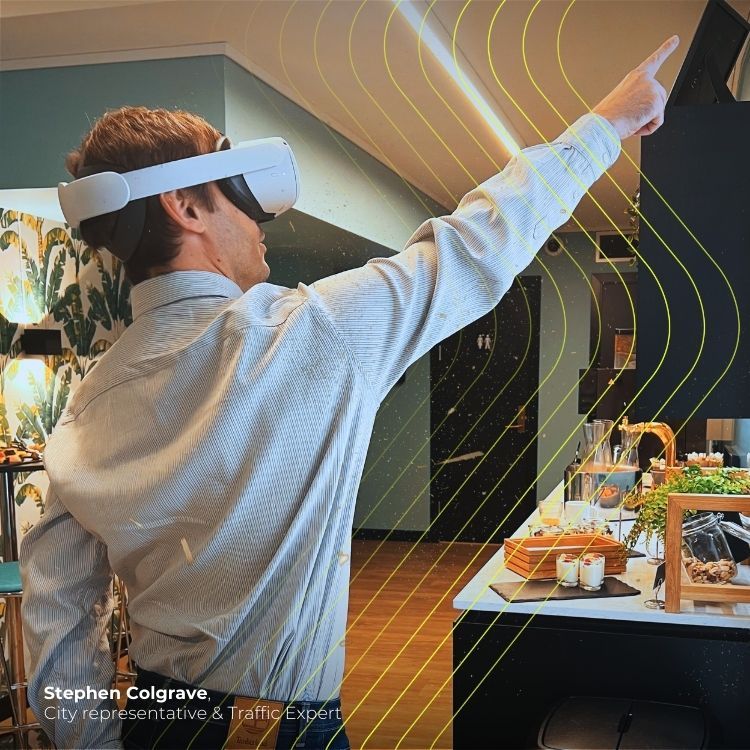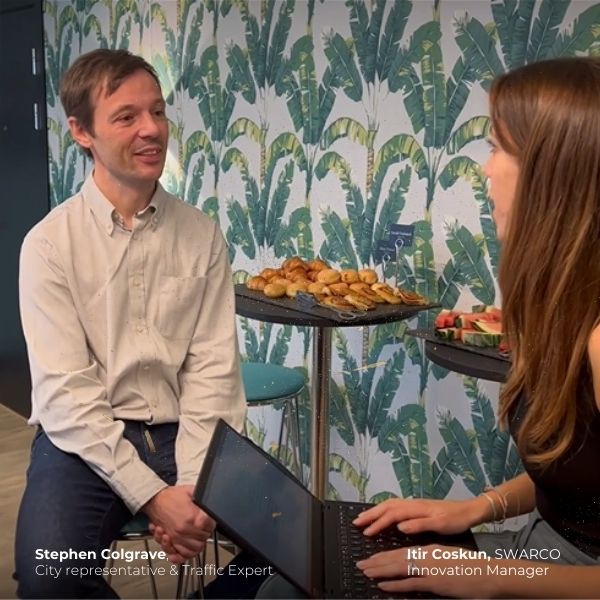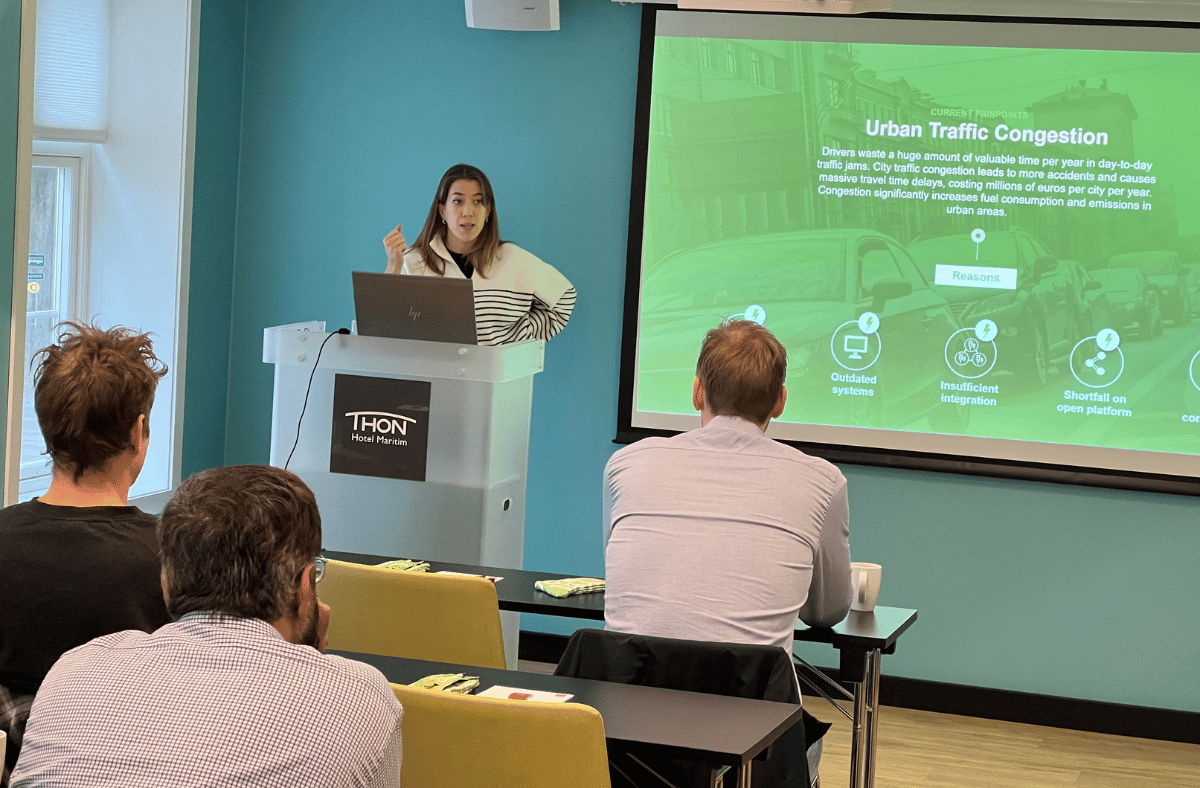Stavanger’s journey to meet EU Green Deal Targets
INSIGHTS FROM AN EXPERT
In an effort to explore the steps taken by cities aligning with the ambitious targets of the EU Green Deal, the city of Stavanger (read the travel report here: The first climate-neutral cities in Europe | SWARCO) was one of our destinations to discuss current and potential future challenges regarding climate change and the benefits Intelligent Transportation Systems (ITS) with its advanced technology can contribute to overcome these.
The applications of ITS cover various areas: intelligent traffic signals, parking solutions, prioritizing emergency vehicles crucial for saving lives and many more. It offers an extensive array of products and solutions aimed at enhancing air quality, easing congestion, and optimizing space utilization – or briefly expressed – sophisticated technology to reach the ambitious Green Deal targets.
Let’s be realistic!
There is no one-size-fits-all solution available
The heterogeneity of countries regarding geographical location, population density, industrialization levels, natural resources and governmental policies leads to a diverse range of environmental challenges. Therefore each city has to be addressed individually, to find the best possible customized solutions.

There will be no suitable solution without talking to local experts
Aiming to understand the challenges faced by the city of Stavanger, insights and perspectives from experienced experts hold immense value. We took the opportunity to find out the views of a city representative and traffic expert, Stephen Colgrave, who provided valuable insights into Stavanger's current situation and his experience with SWARCO’s GoGreen initiative.
Proactivity is key if we want to counteract climate change. “A lot of changes can actually come upon us more quickly than we think. Suddenly they are here and we have not taken enough time to think about them. So we have to react to changes rather than being more proactive”, Stephen Colgrave states and adds: “Technology is a really, really important enabler, especially if we think about how fast the pace of changes is today!”, emphasizing that the potential of ITS technology is a valuable and future-proof source.

It is simple, and yet so important: “It's improving the quality of life!”, Colgrave mentions, “we also have to think about the future. The Green Deal targets are based upon 2050 and to be honest I think that could well be too late. We have to start affecting changes much quicker than we actually think”, and thus underlines the importance of immediate action.
What does that mean for Stavanger?
What are the key challenges there? “It's urban traffic congestion”, he states, but also describing that it is not as simple as that: “We want to prioritise pedestrians, cyclists and public transport over individual vehicles. However, this prioritization needs to be done in a comprehensive and balanced way, otherwise it may result in increased congestion, queues and delays, and we don’t want that. ”
This is a natural, but sometimes not so consciously perceived effect in urban areas and leads to significant air pollution, negatively affecting Net Zero objectives.
The fact is that not everybody can be prioritized at the same time, and this is also something the GoGreen initiative takes into consideration with a balanced approach aiming to harmonize the interaction of different kinds of road users. This reduces environmental impacts and increases traffic flow, health and safety.
...and here, GoGreen comes into play!
How advanced ITS solutions can achieve this, was demonstrated to the participants in our virtual reality environment as a part of our GoGreen engagement. This VR-experience addresses the different pain points of day-to-day traffic. It takes attendees on a journey through SWARCO’s Meta City, presenting innovative solutions in ITS which can significantly facilitate the attainability of climate goals.
Stephen Colgrave, who also had the opportunity to get an idea of what GoGreen is about, summarizes the key takeaways: “In this VR everything is a connected system. Everything is talking to each other. It’s a very good display of all of the different solutions combined into one holistic solution.”

Is there more added value?
“It's very, very interactive. In that respect, it's far better than just setting through different presentations. I think you take much more from a kind of interactive system”, he mentions and emphasizes the added value the VR provides if other cities want to know how to efficiently tackle environmental challenges with sophisticated and future-proof traffic management solutions.
Experience on your own what GoGreen is capable of!
The meeting in Stavanger showed us very good insights: although the composition of the different challenges may vary from city to city, there’s one key takeaway that concerns everyone: in order to create a better future, we have to be proactive. Without proactivity, developments will be slow and Green Deal targets difficult to achieve. The technology needed to tackle climate change is there, we just have to take the reins and act. Take the first step and contact us. In a face-to-face meeting we can discuss the challenges your city is facing, draft customized solution approaches and show you the huge potential of GoGreen in virtual reality.

Let’s make Europe green. Deal?
Learn more about GoGreen and follow the journey.